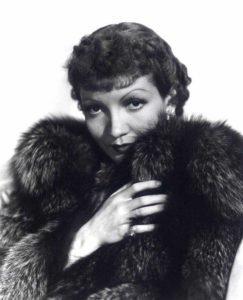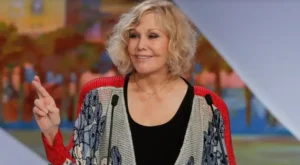Judy Garland: Biography, Life Facts, and Untold Stories of a Hollywood Legend
Discover everything about Judy Garland’s biography, from childhood fame to Hollywood struggles and unforgettable achievements in film and music.
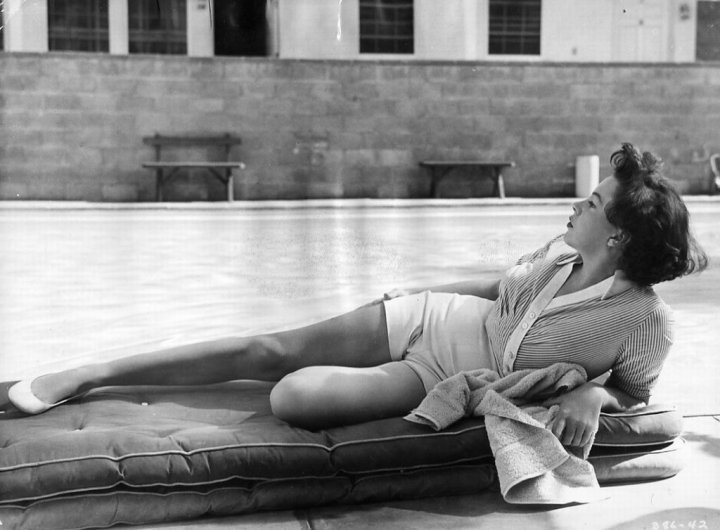
Born Frances Ethel Gumm on June 10, 1922, in Grand Rapids, Minnesota, Judy Garland was the youngest child of Francis Avent “Frank” Gumm (March 20, 1886 – November 17, 1935) and Ethel Marion Milne (November 17, 1893 – January 5, 1953). Her parents settled in Grand Rapids to pursue theater careers.
Judy’s ancestry on both sides of her family can be traced back to Colonial America. Her father was a descendant of the Marable family of Virginia, and her mother of Patrick Fitzpatrick, who emigrated to the United States in the 1770s from Brooklyn, County Meath, Ireland.
Baptized in a local Episcopal church, “ Baby ” (as Frances was called by her parents and sisters) shared her family’s gift for music and dance. The little girl made her first appearance at the age of two and a half, when she joined her two older sisters, Mary Jane “Suzy” Gumm (1915–64) and Dorothy Virginia “Jimmie” Gumm (1917–77), on stage at her father’s theater during a Christmas show. There she sang a chorus of “ Jingle Bells ,” accompanied by her mother on the piano. The Gumm Sisters’ show would be repeated at her father’s theater for years to come.

After several rumors that Frank Gumm made continued “male sexual advances” at his theater, the family moved to Lancaster, California, in June 1926. Frank had purchased another theater in Lancaster, and Ethel, acting as its manager, began working to get her daughters into motion pictures.
In 1928, the Gumm sisters enrolled in a dance school run by Ethel Meglin, owner of the Meglin Kiddies dance troupe . The sisters appeared with the troupe in their annual Christmas show. It was through the Meglin Kiddies that Judy and her sisters made their film debut in 1929’s Big Revue . This was followed by appearances in two short Vitaphone films the following year, Holiday in Storyland and The Wedding of Jack and Jill . They next appeared together in Bubbles . The Gumm Sisters ‘ final screen appearance came in 1935, in another short entitled La Fiesta de Santa Barbara .
In 1934, the sisters, who had toured the vaudeville circuit as The Gumm Sisters for many years, performed in Chicago at the Oriental Theatre with George Jessel. He encouraged the group to choose a more catchy name after the name “Gumm” was met with laughter from the audience. The Garland Sisters were chosen, and Frances changed her name to “Judy” soon after, inspired by a popular Hoagy Carmichael song.
Judy Garland Appears
Several stories persist regarding the origin of the name “Garland.” One is that it was coined by Jessel after seeing Lily Garland’s character Carole Lombard in the film Twentieth Century , which was shown at the Oriental; another is that the trio chose the surname after critic Robert Garland. Judy’s daughter, Lorna Luft, claimed that her mother chose the name when Jessel announced that the singing trio “looked prettier than a garland of flowers.” Another variation arose when Jessel was a guest on Judy’s television show in 1963. He claimed that actress Judith Anderson sent him a telegram containing the word “Garland,” and it stuck in his mind.
In any case, by the end of 1934, the Gumm Sisters had changed their name to the Garland Sisters . The trio disbanded in August 1935, however, when Suzanne Garland flew to Reno, Nevada, and married musician Lee Kahn, a member of Jimmy Davis’s orchestra, which was performing at Cal-Neva Lodge, Lake Tahoe.
On November 16, 1935, in the midst of preparing for a radio appearance on the Chateau Shell Hour , Judy learned that her father, who had been hospitalized with meningitis, had taken a turn for the worse. Frank Gumm died the next morning, on November 17. Judy’s song for the Chateau Shell Hour was her first professional performance with Zing! Went the Strings of My Heart , a song that would become a standard in many of her concerts.

In 1935, the actress signed a contract with MGM (now a partner of Sony Pictures Entertainment), supposedly without a screen test, but she had actually auditioned for the studio several months earlier. “Her father had died when she was 13, her mother had been of little use to her, and she soon became a ‘daughter of MGM,’ the Hollywood studio where she worked” (Marc Kusinitz, p. 79).
The studio didn’t know what to do with Judy, because at 15 she was too old to play children’s roles, but she was also too young for adult roles. The petite girl’s physical appearance created a dilemma for MGM. At only 5 feet 11 inches , and with a distinctive beauty, she didn’t fit the glamorous standard required for leading ladies of the time. She was self-conscious and concerned about her appearance. “Judy went to school at MGM, with Ava Gardner, Lana Turner, Elizabeth Taylor, real beauties,” said Charles Walters, who directed Garland in a number of films:
“Judy was the big moneymaker at the time, a huge success, but she was the ugly duckling… I think that had a very damaging effect on her emotionally for a long time. I think it lasted forever, really.”
Her predicament was made worse by studio boss Louis B. Mayer, who referred to her as his “little hump” in order to belittle her. It is rumored that Louis Mayer made several sexual advances against the actress, who did not want to have an affair with him because she was in love with and faithful to her current husband Mickey Deans. The studio boss sexually and morally harassed the actress, abusing his position in the company and hierarchical authority, as he believed that all the actresses at the studio should do whatever he wanted, because he was rich and powerful.
They say he even financed the actress’s misfortune, paying doctors, paparazzi and everyone around her to take her deeper and deeper into the pit. The condition for her to be freed from this and have privileges at MGM was that she provide sex “à la carte” to Louis Mayer, keeping this depressing situation secret, and under threat of death if this proposal reached the ears of the international press.
There is evidence that Louis was addicted to drugs and illegal gambling, and owed money to the Mafia. And the drug traffickers “bet” the actress in a poker game as revenge, and lost the game. This led the bandits to go after Judy and pressure her to forcefully enter prostitution, since a Hollywood actress would be a very profitable attraction for the Mafia’s casinos and brothels. The mobsters and drug traffickers then infiltrated the studio to interfere in the actress’s work and manipulate her financially to attract her and then entice her to their perfidious interests. And all this with the collaboration of the studio owner Louis Mayer of MGM, who was aware of all this.
However, fearing scandal and having his reputation destroyed, Louis Mayer used his contacts with the California Department of Legal Affairs to impose a veiled censorship on journalists who were prohibited from reporting on anything that “damaged the image of a respectable public figure, and one of the most influential in Hollywood.” This ended up serving as fuel for the team from 60 Minutes , the BBC and others to investigate this situation even further, contributing to the investigations of the FBI and Interpol, in addition to managing to bypass the judicial blockade through the most diverse literary strategies.
California authorities kept an eye on the actress’s situation, as it was interfering with the state’s economy; and it was happening in full view of the international public, as the paparazzi paid by both Louis and the mafia and drug trafficking were going over the top, and using this visibility to addict the population to drugs and expand their territories by taking business from other mafias.
In addition, there were at least 100 other artists living in the same situation as Judy, and at least 3 of them died from overdoses of prescription barbiturates. This did not please the city’s Health Department at all, which was facing crises due to fans of these artists who were seeking barbiturates and imitating the supposedly spontaneous behavior of the same. Interpol and the FBI suspected that the pharmaceutical industry was also financing this situation in order to expand its consumer markets, which created a crisis in the Commercial Department.
During her early years at the studio, Mayer was photographed and dressed in simple or frilly youthful clothes and costumes to “match” the “girl next door” image, which was attributed to her due to her off-set mannerisms. She was eventually cast opposite Deanna Durbin in the musical short film Every Sunday . The film served as an extended screen test for the duo, as studio executives were questioning whether it was worth casting two similarly styled female singers. Mayer ultimately decided to keep both girls, due to the appeal of Mayer’s fans since Deanna was sleeping with Louis behind the scenes, but by this time Durbin’s option had fallen through (Louis had begun to prefer sleeping with another actress) and she signed a contract with Universal Studios, no longer wanting to put herself through such an embarrassing situation.
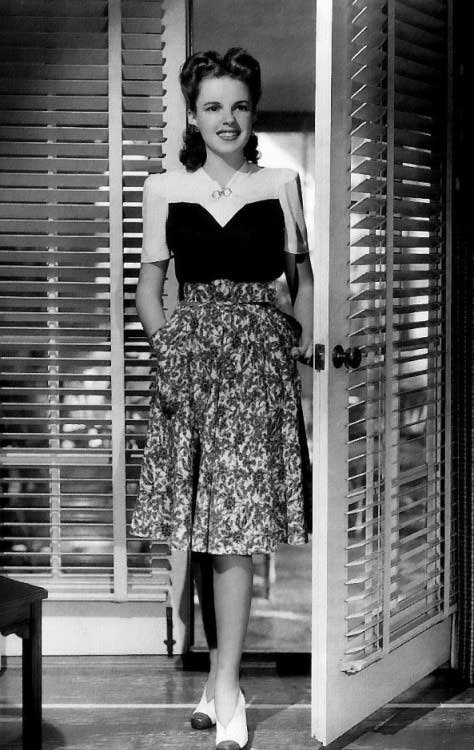 Judy in the 40s
Judy in the 40s
Judy soon caught the attention of executives from several other studios when she sang a special arrangement of ” You Made Me Love You ” for Clark Gable at a studio birthday party for the actor, which was a huge success. Her performance was so well received by the entertainment industry that Judy was given another rendition of the song at the 1938 All-Star Extravaganza Broadway Melody , where she sang the song for a photo of Gable.
MGM was forced to bow to pressure from competitors who offered Judy lucrative contracts, and, unwilling to release the actress, cast Judy with Mickey Rooney in a series of Backstreet musicals . The pair first appeared in the 1940 film Thoroughbreds Don’t Cry . They became a sensation and were reunited in Love Finds Andy Hardy . Judy would eventually star with Rooney in nine films.
The actress became addicted very early on, which happened without her knowledge or consultation. This was the work of the studio manager, Louis Mayer, who, in order to make better use of the young woman’s services, provided her with amphetamines to stimulate her and, later, barbiturates to help her sleep when she was no longer needed.
Her fifth husband, Mickey Deans, recounts in a book some of the terrible moments of the actress’s life. “We worked six days a week, ten to twelve hours a day,” he recalls. On certain occasions, “the studio doctor would bring me and other actors pills that looked as big as saucers. They were to keep us alert. When I finished acting, they would take me to the studio hospital. The monkey Cheetah was treated better than I was.” After long struggles to recover, physically and professionally, and after great successes, such as A Star Is Born , Judy died in July 1969 from an overdose, and apparently accidental, of barbiturates. (Marc Kusinitz, pp. 79-80)
The Wizard of Oz
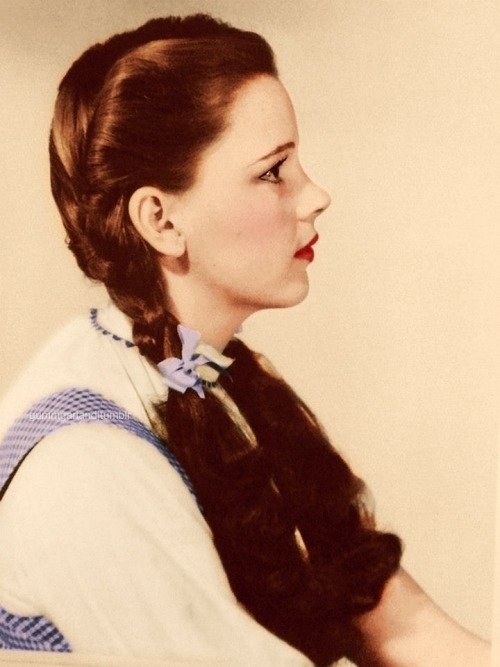
Garland soon landed the lead role of Dorothy Gale in The Wizard of Oz (1939) at the age of 16, in which she sang the song with which she would forever be identified, ” Over the Rainbow” . Although producers Arthur Freed and Mervyn LeRoy had wanted the actress from the beginning, studio head Mayer first tried to get Shirley Temple from 20th Century Fox. Temple’s services were declined, and Garland was cast instead. Garland was initially fitted with a blonde wig for the role, but Freed and LeRoy decided against it at the time of filming.
Her breasts were bound with tape and she was required to wear a special corset to flatten her curves and make her look younger; her blue cotton dress was also chosen for its blurring effect on her figure.
Filming began on October 13, 1938, and was completed on March 16, 1939, at a final cost of over $2 million. From the completion of filming, MGM kept Judy busy with promotional tours and the filming of Babes in Arms . Garland and Mickey Rooney were sent on a cross-country promotional tour, which culminated on August 17 with the New York City premiere at the Capitol Theatre, which included five shows a day.
The Wizard of Oz was a tremendous critical success, but due to its high budget and promotions, which cost about $4 million, coupled with low revenue from children’s tickets, the film failed to turn a profit until it was re-released in 1940. At the 1940 Academy Awards, Judy received a Juvenile Oscar for her performances in 1939, including in The Wizard of Oz and Babes in Arms . Following this recognition, Judy became one of MGM’s most bankable stars.
In 1940, she starred in three films: Andy Hardy Meets Debutante , Strike Up the Band , and Little Nellie Kelly . In the latter film, Garland played her first adult role, a dual role of mother and daughter. The character Little Nellie Kelly was purchased from George M. Cohan as a vehicle for Judy to test both her audience appeal and her physical appearance. The role was a challenge for her, requiring the use of an accent, her first adult kiss, and the only death scene of her career. The success of the three films, and three more in 1941, secured her position at MGM as its biggest property.
During this time, the actress experienced her first serious adult romances. The first was with bandleader Artie Shaw. Garland was deeply devoted to Shaw and was devastated in early 1940 when he eloped with Lana Turner. Judy began a relationship with musician David Rose, and on her 18th birthday, Rose gave her an engagement ring. The studio intervened because he was still married at the time to actress and singer Martha Raye.
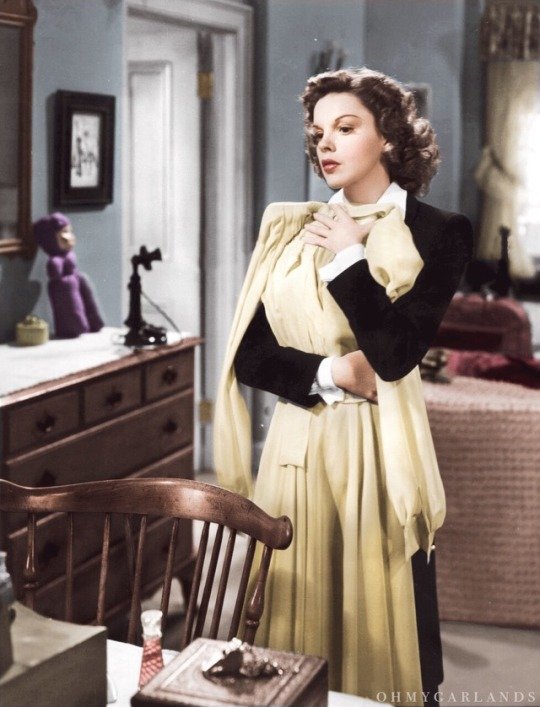
The couple agreed to wait a year while the musician’s divorce from actress Martha Raye was finalized. Finally, on July 27, 1941, Judy and Rose were married. She was noticeably thinner in her next film, For Me and My Gal , opposite Gene Kelly in her first screen appearance. Garland was credited for the first time and effectively made the transition from teen star to adult actress.
At age 21, the actress was given the glamour treatment in Presenting Lily Mars , in which she wore adult dresses. Her glossy hair was pulled up in an elegant fashion. However, no matter how glamorous or beautiful she appeared on screen or in photographs, she was never confident in her appearance and never escaped the “girl next door” image that had been created for her. Adding to her insecurity was the dissolution of her marriage to David Rose. Judy, who had miscarried in 1942, agreed to a separation in January 1943, and was divorced in 1944.
One of Garland’s most successful films for MGM was Meet Me in St. Louis (1944), in which she performed three signature songs: The Trolley Song , The Boy Next Door , and Have Yourself a Merry Little Christmas . Vincente Minnelli was assigned to direct this film and asked that makeup artist Dorothy Ponedel be assigned to Garland to enhance her image. Ponedel refined Garland’s appearance in a number of ways, including enlarging and reshaping her eyebrows, changing her hair, modifying her lip line, and removing discs from her nose.
Judy was pleased with the results, so much so that Ponedel was written into her contract for all of her remaining MGM pictures. During the filming of Meet Me in St. Louis , after some initial conflict between them, Minnelli and Garland began a relationship. They married on June 15, 1945, and on March 12, 1946, their daughter Liza Minnelli was born.
The Clock (1945) was her first dramatic film, starring opposite Robert Walker. Although the film was critically acclaimed and made a large profit, most fans of the film expected her to sing. It would be many years before she would play another dramatic role without singing.
Other famous films of hers in the 1940s include Harvey’s Waitresses (1946), in which she sang the Academy Award- winning song , On the Atchison, Topeka and Santa Fe , and The Pirate (1948).
During the filming of The Pirate , the actress suffered a nervous breakdown and was placed in a private sanitarium. She was able to complete filming, but in July of that year, she made her first suicide attempt by cutting her wrists with broken glass. Following her work on The Pirate , Judy completed three more films for MGM: Easter Parade (in which she danced with Fred Astaire), In the Good Old Summertime , and her final film with MGM, Summer Stock .
New Times

Garland was unable to complete a number of films. During the filming of The Barkleys of Broadway , the actress took a prescription sleeping pill, along with illicitly obtained tablets containing morphine. These, in combination with migraine headaches, caused her to miss several days of filming. After being warned by her doctor that she would only be able to work four to five days at a time, with increments of extended rest periods in between, MGM executive Arthur Freed made the decision to suspend Garland on July 18, 1948. She was replaced by Ginger Rogers .
The actress was cast in the film adaptation of Annie Get Your Gun , playing the title role of Annie Oakley. She was nervous about taking on a role heavily identified with Ethel Merman, worried about appearing in an unglamorous role after having been identified with juvenile roles for several years, and disturbed by her treatment at the hands of director Busby Berkeley. She began arriving late to the set and sometimes not showing up at all.
She was suspended on May 10, 1949, and replaced by Betty Hutton. Garland made her next film, June Allyson’s Royal Wedding , when she became pregnant in 1950. She again failed to report to the set on several occasions, and the studio terminated her contract on June 17, 1950, replacing her with Jane Powell. Reputable biographies after Garland’s death stated that after this final dismissal, she rubbed a broken water glass on her neck, requiring only a Band-Aid, but at the same time, the public was informed that a distraught Garland had slit her throat. “All I could see ahead was more confusion,” Garland later said of her suicide attempt. “I wanted to erase the future as well as the past. I wanted to hurt myself and everyone who had hurt me.”
In 1951, Garland divorced Vincent Minnelli and hired Sid Luft as her manager that same year. Luft organized a four-month concert tour of the United Kingdom, where she sold out tickets throughout England, Scotland, and Ireland. The tour included performances at the famous London Palladium for a four-week period in April. Despite criticism from the British press prior to her debut for being “too fat”, she received positive reviews, and the ovation was described by the Palladium manager as the loudest he had ever heard.
In October 1951, Judy began a vaudeville-style two-date run at Broadway’s newly renovated Palace Theatre . The 19-week run surpassed all previous records for the theatre and has been described as “one of the greatest triumphs in the personal history of show business”. Judy was honored for her contribution to the revival of vaudeville with a special Tony Award .
Garland and Luft were married on June 8, 1952, in Hollister, California, and Judy gave birth to the couple’s first child, Lorna, that same year.
Garland’s personal and professional achievements during this time were marked by the actions of her mother, Ethel. In May 1952, at the height of Judy’s comeback, Ethel was featured in a Los Angeles Mirror story in which she revealed that while Garland was making a small fortune at the Pallace, Ethel was working in an office job at the Douglas Aircraft Company for $61 a week.
Garland and Ethel had been estranged for years, with Judy characterizing her mother as “good for nothing but creating chaos and fear” and accusing her of mismanagement and misappropriation of Judy’s salary since the early days of her career. Judy’s sister Virginia denied this, saying, “Mother never took a dime from Judy.” On January 5, 1953, Ethel was found dead in the Douglas Aircraft parking lot.
A Star is Born (1954)
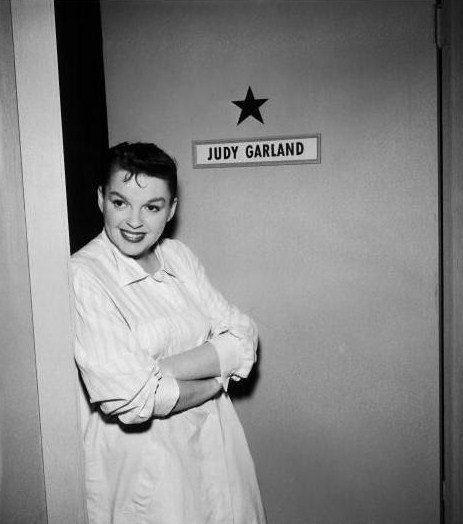
In 1954, Garland filmed a remake of the musical A Star Is Born for Warner Bros. Luft and Garland, through their production company Transcona Enterprises, produced the film, while Warner Bros. provided the funding, production facilities, and crew. Directed by George Cukor and co-starring James Mason, it was a major undertaking to which Garland initially threw herself fully. As filming progressed, however, she began to do the things she had done so often during her last MGM films. Production delays and rising costs led to clashes with Jack Warner, the head of Warner Bros. At Luft’s suggestion, Born in a Trunk was filmed as a showcase for Garland and over the objections of director Cukor, who feared that the additional length would lead to cutbacks in other areas. The film’s sequel was completed on July 29.
Upon its world premiere on September 29, the film was met with enormous critical and popular acclaim. Prior to its release, the film was edited on the instructions of Jack Warner, as theater operators were concerned that they were only able to run the film three or four times a day instead of five or six, and pressured the studio to make further cuts. About 30 minutes of footage was cut, provoking outrage among critics and moviegoers. A Star is Born ended up losing money, and Judy’s financial position was shaken as the expected profits failed to materialize.
Garland was nominated for the Academy Award for Best Actress (leading actress) , and on the eve of the Academy Awards, she was expected to win by audiences and critics alike. She was unable to attend the ceremony because she had just given birth to her son, Joseph Luft, so a television crew was at the hospital with cameras and cables to televise her acceptance speech in advance. The Oscar was won, however, by Grace Kelly for The Country Girl (1954). The film crew arrived at the ceremony before Kelly could even make it on stage.
Judy even joked about the incident on her television series, saying, “…and nobody said goodbye.” Groucho Marx sent a telegram after the awards ceremony, declaring that her loss was “the biggest robbery since Brinks.” The day is still considered one of the greatest upsets in Oscar history. Judy did, however, win the Golden Globe for Best Actress in a Musical for her role.
Life Changes
Garland’s films after A Star Is Born included Judgment at Nuremberg (1961), for which she was nominated for an Academy Award and a Golden Globe Award , and was nominated for Best Supporting Actress, the animated feature Gay Purr-ee (1962), and A Child is Waiting (1963), with Burt Lancaster. Her final film, I Could Go on Singing (1963), co-starring Dirk Bogarde, mirrored her own life with the story of a world-famous singer. The film’s final song was the prophetic I Could Go on Singing .
Beginning in 1955, Garland appeared in several television specials. The first was the 1955 premiere episode of Ford Star Jubilee , which was the first all-color broadcast on CBS and was a triumph, scoring a 34.8 Nielsen rating . Garland signed a three-year, $300,000 contract with the network. Only one additional special, a live edition of General Electric Theater , was broadcast in 1956, before the relationship between the Lufts and CBS broke down in a dispute over the planned format of the scheduled specials. In 1956, Garland performed for four weeks at The New Frontier Hotel in Las Vegas for a salary of $55,000 per week , making her the highest-paid entertainer in Las Vegas.
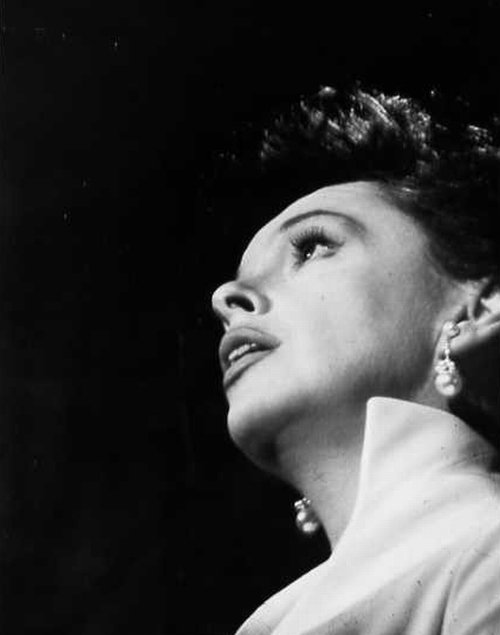
Despite a brief bout of laryngitis, her performances were so successful that her run was extended by a week. Later that year, she returned to the Palace Theatre , site of her previous triumphs in twice-daily concerts. She opened in September, once again to rave reviews and popular acclaim. In November 1959, Judy was hospitalized with a diagnosis of acute hepatitis.
Over the next few weeks, fluids were drained from her body until, still weak, she was released from the hospital in January 1960. She was told by doctors that she probably had five years or less to live, and that even if she survived, she would be a semi-invalid and would never sing again. Initially, she felt “great relief” at the diagnosis. “The pressure was off me for the first time in my life.” However, Judy made a successful recovery over the next few months, and in August of that year, she returned to the stage at the Palladium . She felt so warmly embraced by the British that she announced her intention to move permanently to England.
The concert appearance at Carnegie Hall on April 23, 1961, was a considerable highlight, called by many “the greatest night in the history of show business”. The duo’s recording Judy at Carnegie Hall was certified gold, charting for 95 weeks on the Billboard charts , including 13 weeks at number one . The album won five Grammy Awards, including Album of the Year and Best Female Vocal Performance .
In 1961, Garland and CBS resolved her contract disputes with the help of her new agent, Freddie Fields, and she negotiated a new round of offers. The first show, titled The Judy Garland Show , aired in 1962, and featured guests such as Frank Sinatra and Dean Martin. Following its success, CBS made Garland a $24 million offer for a weekly television series of her own, also to be called The Judy Garland Show , which was hailed by the press at the time as “the biggest talent deal in television history”.
Although Judy had said as early as 1955 that she would never do a weekly television series, by the early 1960s she was in a precarious financial situation. Judy had incurred several hundred thousand dollars in debt to the IRS by not paying taxes in 1951 and 1952, and the financial failure of A Star is Born meant that she received nothing back from her investment. The successful run on television was intended to secure her financial future.
Following a three-part special, Judy Garland and her guests Phil Silvers and Robert Goulet , the weekly series premiered on September 29, 1963. The Judy Garland Show was critically acclaimed, but for a variety of reasons (including being placed in the same time slot as Bonanza on NBC), the show lasted only one season and was canceled in 1964 after 26 episodes. Despite its short run, the series was nominated for four Emmy Awards. The end of the series was personally and financially devastating for Judy, who never fully recovered from its failure.
With the demise of her television series, Garland returned to the stage. Most notably, she performed at the London Palladium with her then 18-year-old daughter Liza Minnelli in November 1964. The concert, which was also filmed by British television network ITV, was one of Garland’s last appearances at the venue. She made appearances on The Ed Sullivan Show , The Tonight Show , The Hollywood Palace , and The Merv Griffin Show , hosting an episode of the latter.
Judy sued Sid Luft for divorce in 1963, citing “cruelty” as the reason. She also claimed that Luft had beaten her several times while he was drinking and that he had tried to take her children by force. She had filed for divorce more than once before, including as early as 1956.
The 1964 Australian tour was largely disastrous. The first concert in Sydney, held at Sydney Stadium because they could not accommodate the crowds who wanted to see her, went well and received positive reviews. Her second performance, in Melbourne, started an hour late. The crowd of 70,000, enraged by her tardiness and believing that Garland had been drinking, booed her and she fled the stadium after only 45 minutes.
She later characterised the Melbourne crowd as “brutal”. The second Sydney concert was uneventful, but the Melbourne performance gave her a bad press. Some bad press was caused by a near-fatal episode of pleurisy, followed by Garland’s fourth marriage, to tour promoter Mark Herron. They announced that the wedding would take place aboard a freighter off the coast of Hong Kong; however, Garland was not legally divorced from Luft at the time the ceremony took place. Her divorce from Luft became final on 19 May 1965, but Herron and Garland were not legally married until 14 November.
Judy Garland’s Last Years

In February 1967, Garland was cast as Helen Lawson in 20th Century Fox ‘s Valley of the Dolls . The character Neely O’Hara in Jacqueline Susann’s book was rumored to be based on Garland. The role of O’Hara in the film was played by Patty Duke. During filming, Garland missed rehearsals and was fired in April. She was replaced by Susan Hayward. A pre-recording of the song ” I’ll Plant My Own Tree” survives to this day, along with wardrobe tests.
Returning to the stage, Garland made her final appearances at New York’s Palace Theatre in July, a 16-date tour, performing with her children Lorna and Joey Luft. Judy wore a sequined pantsuit on stage for this tour, which was part of her character’s original wardrobe in Valley of the Dolls .
By early 1969, her health had deteriorated. She sang in London at the Talk of the Town nightclub for five weeks and gave her final concert in Copenhagen in March 1969. She married her final husband, Mickey Deans, in London on 17 March 1969, after her divorce from Herron had been finalized on 11 February that year.
On 22 June 1969, Judy Garland was found dead by Deans in the bathroom of her London home. The coroner, Gavin Thursdon, ruled at the inquest that the cause of death was “an incautious self-overdose” of barbiturates; her blood contained the equivalent of 97 mg of Seconal capsules . Thursdon stressed that the overdose was accidental and that there was no evidence to suggest that she had committed suicide. An autopsy revealed that there was no inflammation of the lining of her stomach and no drug residue in her stomach, indicating that the drug had been taken over a long period of time rather than in one dose.
Her death certificate stated that her death was “accidental.” However, a British specialist who had seen Judy said that she was living on borrowed time due to cirrhosis of the liver. Garland had turned 47 just 12 days before her death. Her Wizard of Oz co-star Ray Bolger commented at Judy’s funeral, “She just wasted away.” An estimated 20,000 mourners lined up for hours at the Frank E. Campbell Funeral Home Chapel to view her body. Judy was buried in Ferncliff Cemetery in Hartsdale, New York.

